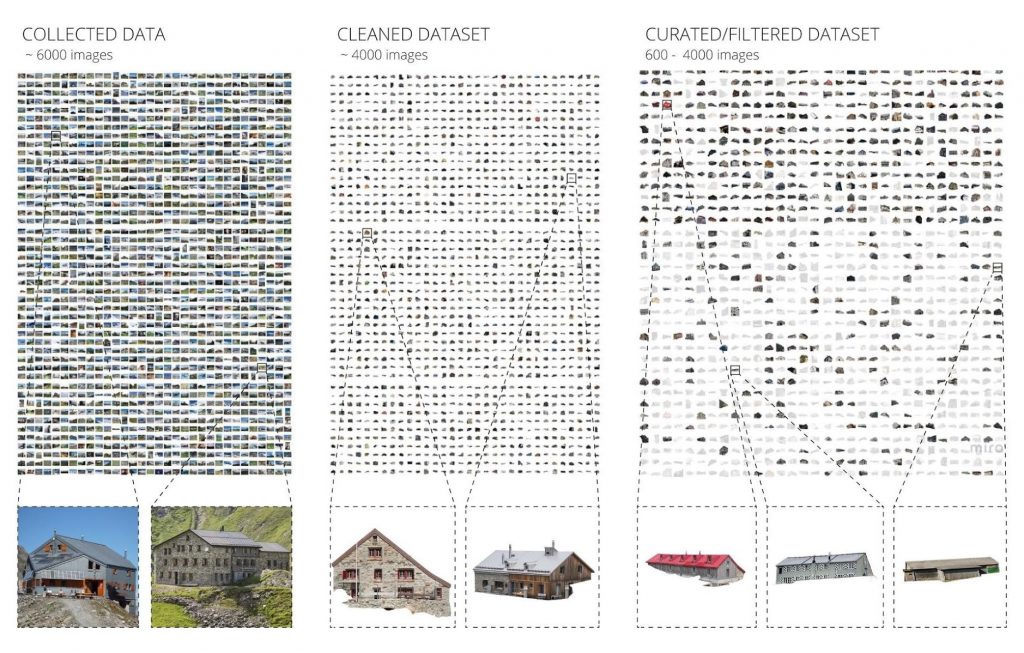
Data curation and GAN manipulation (or equivalent deep learning network) is used to create variations of artificially generated alpine refuges with the quality of “Swissness”, where the collection of facades of Swiss alpine architecture will serve as samples for the algorithms to explore how architects can use and interact with machine learning algorithms as a creative tool.
In this experiment the algorithm serves as a new mode of vision, bypassing the preconceptions of the human designer in order to reveal an unbiased pool of ideas for the architect to choose from. The algorithm focuses the attention on details otherwise unnoticed and generates new interpretations. The curation of the input data set and the critical analysis of the generated images are vital to the success of the assignment.
The experiment generates images of mountain cabins using a GAN algorithm (generative adversarial network), producing a data set of about 6000 images of Swiss mountain cabins common to the studio.
Each student in the studio trains his or her own GAN on Google Colab (a remote server) with a personal selection of images from the common image pool. The more images the better the algorithm performs. The GAN eventually learns from these images to generated new forms of cabins. Students select and curate the data set to generate a final selection of 144 images which in their opinion capture “Swissness” or the Swiss cabin the best.
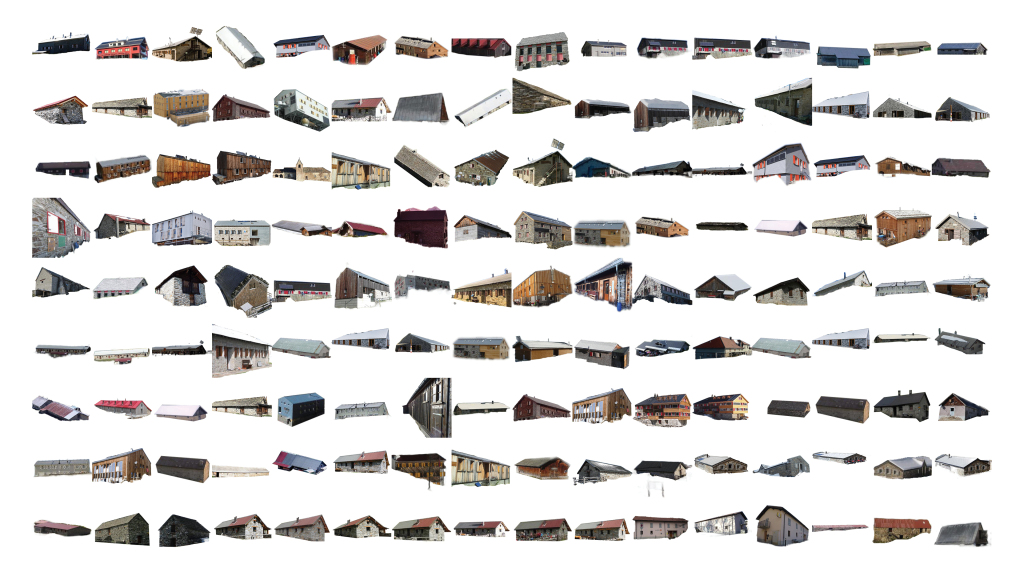
GAN manipulation by Yasmine El Karmoudi: A large number of images of the original dataset can be characterized by their longitudinal shape, and one can hypothesize that for a program with a large volume in a cold weather this shape was the most suitable form for the climate and terrain of the swiss Alps.
The dataset is formed by 242 images that depict longitudinal buildings. With such a precise dataset, the most suitable GAN training was the DCGAN. The training of the main GAN model consisted of lowering the learning rate as it progressed in its learning: from 0.00005 to 0.00002. After 40 epochs it was considered that the program had learned enough to be precise.
While the longitudinal shape is very recurring in the output, the program combines it with a great variety of other elements.
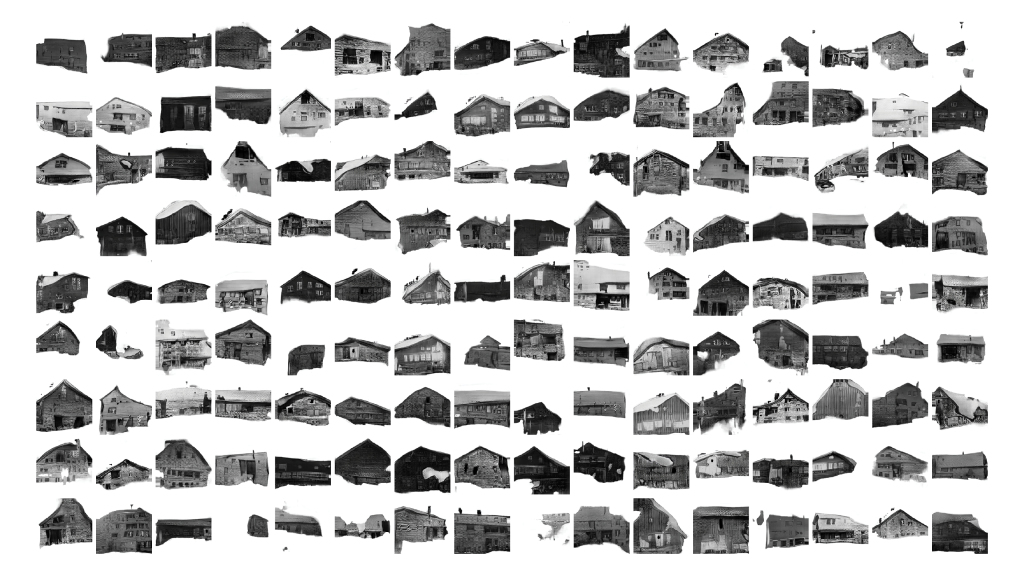
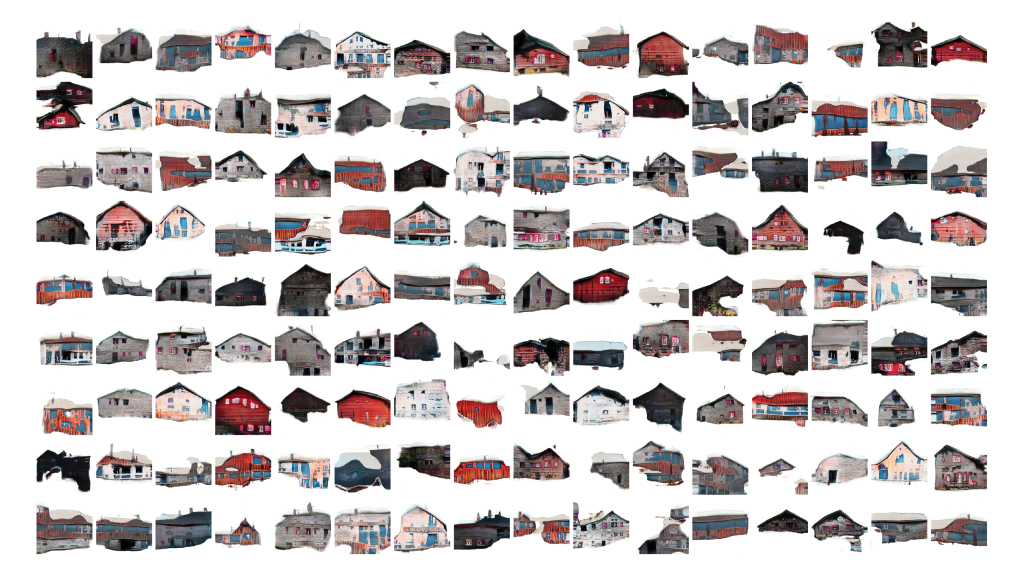
GAN manipulation by Kimberlyne Nguyen: The essence of Swissness is materiality. Therefore, the initial datasets have been manipulated in consequences and divided in two: black/white and color, all of them frontal, in order to smooth the GAN’s learning-curve and to help its understanding of textures.
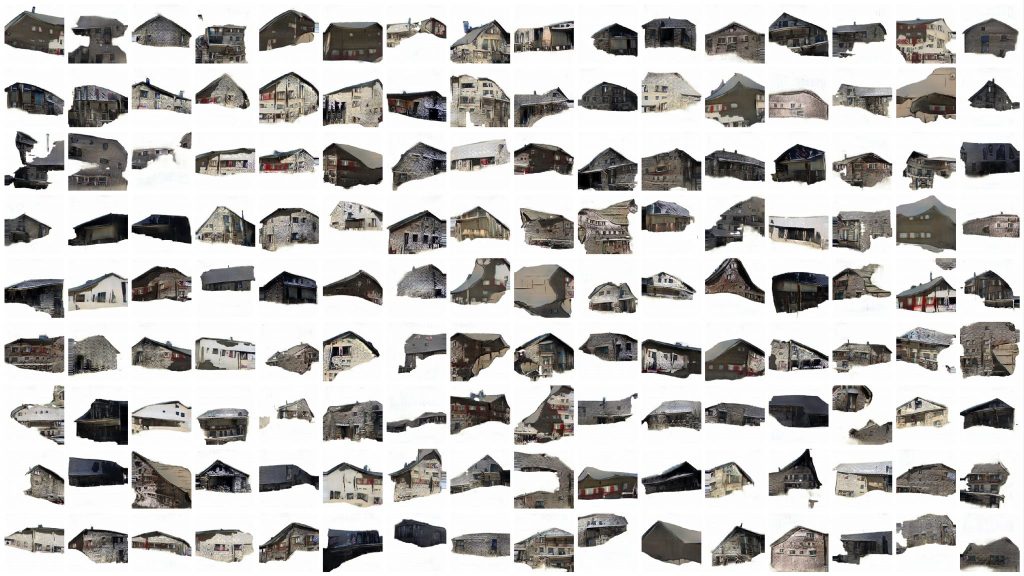
GAN manipulation by Eric Nardini: The main idea of this experimentation is to show the use and integration of IA in a creative process of architecture project. The use of the largest possible dataset is put forward here, in order to “synthesize” the spirit of the Swiss refuge. As far as the chosen network is concerned, DC-GAN was the most viable option. Indeed, the idea was also to show that such a system can be integrated into a classical architecture project workflow. The training was therefore carried out on a single consumer PC. The training, which lasted 79 epochs, led to the following results.
The choice was based on a scoring system, derived from the network itself, using the discriminator scores. However, despite many efforts this was not conclusive. An alternative choice system is therefore applied here. Then, a more personal and sensitive choice is made according to the architectural possibilities of each selected image.
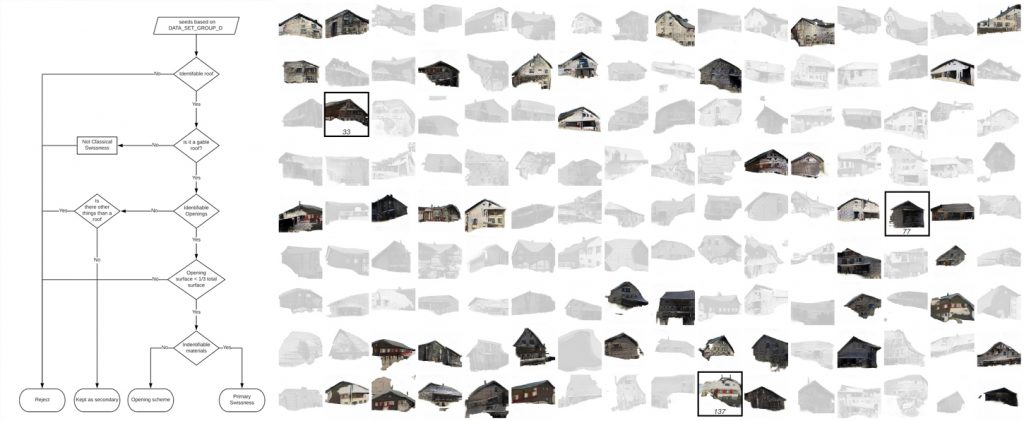
More into at: refugetwopointoh.wordpress.com
Keywords: GAN, Artificial Design, Swissness, Housing.
Students: Yasmine El Karmoudi, Kimberlyne Nguyen, Eric Nardini
Studio tutors: Christina Doumpioti, Christoph Holz, Mikhael Johanes, Frederick Kim, Gianna Ledermann
Professor: Jeffrey Huang